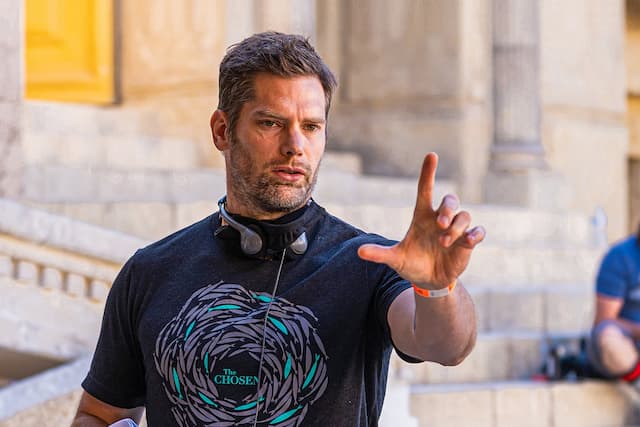Wiffle Ball Discipleship
I'm sure you know what a wiffle ball is: a little, light plastic ball, full of holes, empty inside, enjoyed by the young, that won’t go very far.
In every respect, there are discipleship efforts in our churches very much like this. Let’s consider how this might be so.
First, there is—
A Discipleship Full of Holes
If we were to ask leaders about the discipleship their church offers, many would say that the most prominent approaches they use are preaching and teaching.
Researchers have discovered that retention is low if one only hears a message (5-10% by the end of the week), or only reads a message (10-20% by the end of the week). Now, that’s not just a hole—it’s a gulch, a gorge, a gulf, a Grand Canyon gap!
Studies such as those conducted by Professor Findley Edge at Southern Seminary in Louisville show that the difference in bible knowledge between people in the church and people outside the churched is negligible.
The preaching may have been well prepared, well delivered, and the teaching curriculum may have been quite good, but neither were good enough to solve the retention problem.
Have you heard the phrase “like pouring water through a sieve”? For the gospel, the phrase might be altered to pouring fine wine through a strainer. The obvious outcome is—most of it is lost! So why keep doing this?
Preaching and teaching must remain, certainly, but let’s not assume these are the best ways to disciple. They are not. At least not by themselves.
Now let’s consider—
A Discipleship That is Hollow
Most of the discipleship offered today is hollow. What exists is a thin layer of concepts; what is missing is major, the character those concepts were supposed to produce.
The first component of discipleship is the one we normally think of, it has to do with the word “learner.” That is what one of the Greek words for “disciple” (mathetes) means. This is the didactic component, the component that targets teaching and belief.
The second component of discipleship is associated with the Greek word opados, which means “follower.” That is the word Jesus used when calling the twelve; this component focuses on behavior. Jesus didn’t show up at class time to teach lessons (belief). His goal was to lead them into a way of life (behavior).
When combining these two concepts, learning and following, the need to focus on both belief and behavior becomes obvious. Any discipleship that dispenses facts only isn’t biblical discipleship. And yet, this approach is the most common one, if not the only one, in many churches.
A major deficit with both preaching and teaching as means for discipleship is that information is disseminated without knowing early in the process if the truths taught are being applied.
Hundreds of studies prove they are not being applied. For example—and this is only one example of many—Christian pollster George Barna said, “Of more than 70 moral behaviors we study, when we compare Christians to non-Christians, we rarely find substantial differences.”
Churches assume, without examination, that if people hang around the church long enough, they’ll become discipled. They won’t.
Third, there is —
A Discipleship That is Too Light
Churches do say something about selected pursuit-of-God dynamics—a blurb, a brief summary, a small nugget of truth—but omit way too much. Fill-in-the-blank discipleship is appropriate for beginners; but most church discipleship never gets past that. The menu of the day, every day, is pablum, more and more pablum for what was supposed to be meaty truth.
The church’s track record for successfully folding new believers into a beginner’s discipleship is getting better but could still be improved. G.D. Watson wrote, “It is often the case that sinners are brought to repentance and faith in Jesus, and then left like newborn babes on the doorsteps of the temple of God either to go back into darkness or linger in a feeble, low state of grace.”
A.W. Tozer observed, “We get our converts off to a bad start. We tell them that following Jesus as Lord is just the smoothest, easiest, slickest thing in the world.” Reality sets in afterwards, though—and isn’t always kind!
The bigger problem, statistically, is what doesn’t occur after a beginner’s class. The new believer starts attending church, only to discover there is no scope or sequence in what’s being taught. Professional educators know the importance of scope and sequence. The church does not. It’s all random.
By jumping into the flow like this, it’s difficult to process, difficult to piece things together, difficult to start building on baseline basics. A foundation is there, but as for all these other parts presented and promoted–well, they’re just not sure what to do with these.
This is where basic discipleship fits in, but only if it isn’t a wiffle ball discipleship that is hollow and full of holes. Though usually, it is that.
Next, we should consider—
A Discipleship that Doesn’t Go Far
In whatever venue discipleship is offered—preaching, teaching, or a designed discipleship program—it goes just so far, which isn’t very far, and no farther.
In many churches, preaching doesn’t evolve or expand. What we hear in year one, we hear again in year five.
Tozer likened the ordeal many people experience at church to being forced to remain in the third grade for five years even though the educational content of that grade was learned the first year. Why would any church do this?
Commenting further, Tozer wrote: “Something within the heart of normal man revolts against motion without progress. Yet this is precisely what we are offered in the vast majority of evangelical churches. Doctrinally these churches are moving around a tight and narrow circle.”
“It never seems to occur to anyone,” Tozer lamented, “that there is true joy farther on if they would only escape the circle and strike out for the hills of God.”
If we track the discipleship journey that God used in the Old Testament, we find four distinct destinations on this itinerary, each graduating from what preceded.
First, escaping Egypt, which represents securing our salvation; and second, Sinai, which represents learning the law and precepts for daily life. This is about as far as most discipleship goes: We get saved, and then we learn biblical principles to live by.
But God knew then what some leaders today seem not to know now: This approach would have never gotten them out of the wilderness! The law, and all these statutes and principles, expose the flesh; they do not—and cannot—defeat it.
Attempting to train the flesh with biblical principles only is utterly useless. God never wanted his people tramping around Sinai (Deuteronomy 1:6-8). That’s why there were two other destinations on God’s itinerary.
The third destination was Kadesh (which means holiness) and the nearby Jordan (which means death). Are you there yet?
In contemplating that, you might give your answer to questions like these:
● Are you living a holy life?
● Have you been taught what holiness is, and isn't, and how to live a truly holy life? Or is holiness, for you, considered an impossible ideal, and therefore it's not really a goal?
● Are you living the crucified life?
● Have you been taught, through multiple series on this subject, how and how not to live a crucified life?
● Have you been taught how sin's control can be stopped in your life?
● Have you been taught, through multiple series of messages, what the new nature is, how it was created, how it alone is your identity, what its components are, how it is received, how it is released, how its released can be sustained, how its release can impact every faculty of the soul?
● Have you been taught these things? And have you been given the personal support needed to implement them?
The answer to these questions for most people is: no, no, and no—and a lot of other no answers! Why? Because holiness isn’t a serious goal (so sinning keeps winning), and because it is practically assumed that the self-life (the big “I”) is going to remain a big problem.
Hannah Whitall Smith declared, “The standard of practical holy living has been so low among Christians that the least degree of real devotedness of life and walk is looked upon with surprise ….” Dr. J. Elder Cumming said, “I hardly know if there be any more appalling thing in the Christian Church than the fact that many Christians are not advancing in holiness at all.”
The fourth destination on God’s itinerary was the Promised Land. This doesn’t refer to Heaven. It refers to the spirit-filled life (which in many churches is falsely claimed and poorly understood), and also the faith conquests that conquer, and the throne life that enables.
● Are you living a spirit-filled life?
● Or is your life the snail crawl of gradualism in which there’s a consistent mix of flesh and spirit, each alternating for control, each regularly experienced and expressed?
● Do you know how to make a faith transaction with God?
● Do you know how to requisition all the benefits the cross secured for your life?
● Do you know how to function in throne life?
● Are you so successful in spiritual warfare that the devil is on the run and all you see, as Tozer puts it, is the hair on the back of his neck?
● Is there an anointing on your life that has a contagion to reach the lost and build up the saved?
So much could be said about these last two destinations, and needs to be said, but are not said, not in wiffle ball discipleship.
Now, let’s conclude by considering—
A Discipleship that Solves These Problems
An effective way to plug the holes of retention loss is for church members to process what was accessed in the prior preaching and teaching in a fellowship group that meets a few days later.
There are three criterions here. I’ll explain each:
1. The truths taught must be meditated in advance of the fellowship in this way:
● Principlize the text: Guided by your teacher or commentaries, briefly state in your own words what each principle means;
●Personalize the text: Ask God what is the area of your life that needs this principle the most;
● Particularize the text: Identify two or three steps you could take to begin activating this principle in your life; and
● Pictorialize the text: See yourself, on your mental screen, successfully making this behavioral change.
2. The truths meditated must be shared in a group where there’s the evaluation and expectation needed to support behavioral change. When this happens, the retention jumps to 75%.
3. The truths about how this change came about in your life must be passed on to others, through teaching or testimony (in the group or outside the group). When this happens, the retention rate increases to 90%. A huge difference!
An effective way to eliminate hollow discipleship is to focus on changing character, not just on acquiring concepts.
To do this, requires an intimate setting where the truths presented are then previewed for practice and reviewed for success. Presentation first, implementation second, evaluation third. Anything worth doing is worth evaluating. The four-step meditation undertaken prior to fellowship strategizes toward this behavioral goal.
For the average Christian, peaks and valleys are not as prominent when graphing spiritual progress as are long plateaus of seemingly no progress. Why is this? Because behavioral change was never really the goal.
Seeking to address what is often missing in discipleship (the behavior part), some leaders are recommending organic discipleship. Organic discipleship, in contrast to didactic discipleship, stresses teachable moments that arise in day-to-day life.
Instead of focusing on a curriculum, the focus is directed toward experience.
Learning how to pray, to witness, to minister, and to live in a Christ-like manner is better accomplished by watching a more mature believer do these things. This seems to be the way Jesus discipled the twelve.
This view has merit, but it also has problems. To choose organic discipleship only, would take a very long time to disciple anyone. Too long, in fact.
According to LeRoy Eims, Jesus spent about 13,000 hours with the twelve. To duplicate this effort today would take, even with the more stringent discipleship programs, approximately 36 years. So, are we going to require that?
Organic discipleship can transact appreciably in a fellowship group that functions with serious intent according to the “one another” principles.
Where the organic-discipleship-only approach fails is its lack of intent to follow the great commission assignment to “teach all things I’ve commanded you.” Its format prevents that.
An effective way to solve the problem of a discipleship that is too light is not to replace it but to add to it in ways appropriate to the level of those being discipled.
Basic discipleship that is too skimpy doesn’t give enough credit to the believer’s ability to learn, nor to the Holy Spirit’s ability to teach. We aim low, so the result is low. No surprise there.
The example from Scripture is different! The believers in the Thessalonica church, for example, had been Christians for only two years, and yet gained a reputation for their spiritual growth that spread to other countries (II Thessalonians 1:3, 4).
This word of caution, though, what we add shouldn’t be academic stuff that appeals to the more cerebral and produces little behavioral change. That may be helpful for some people, but it won’t be for most.
The most effective solution to the discipleship that doesn’t go far is to add advanced discipleship that picks up where basic discipleship left off. This discipleship will add insights to step two of the spiritual journey and say much more about steps three and four.
Many church members have gone only halfway on the spiritual journey Scripture mapped out because that’s where their discipleship led them and left them.
Many of these people never knew they were spiritually stranded because they thought that was all there is.
Complicating this problem is the fact that many church leaders think the same thing. They don’t know what advanced discipleship teaches, either. So, before they can teach it, they need to learn it.
Progressing further on this journey has nothing to do with IQ or being comfortable with academics; that just isn’t what advanced discipleship is about.
For these leaders, and for others who follow them, advanced discipleship will be invigorating and fulfilling. Who wants to keep making tracks in the sand going nowhere? Wilderness wandering has always been a disappointment.
There’s a better future out there, if the journey with Jesus will continue.
No more wiffle ball discipleship, but a discipleship that is solid, not light; holy, not full of holes; advances admirably, so you are no longer spiritually stuck.











